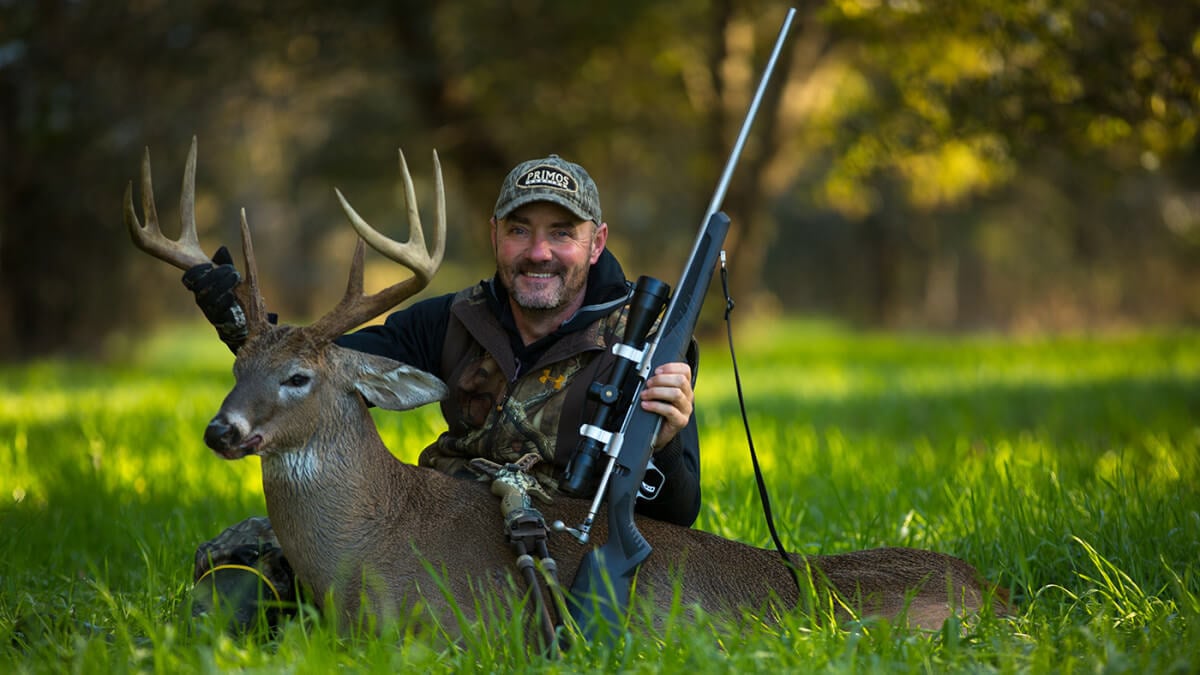- Savage Blog
- Food Plots and Deer Tactics with Primos Hunting
Food Plots and Deer Tactics with Primos Hunting

If you're new to deer hunting or getting started with food plots, there is no one better to ask than our friends at Primos Hunting. Will Primos and Brad Farris always have the expert tips on how to hunt food plots and how to change up your deer tactics at different times of the season.
Planting Food Plots on a Budget
If you have land and the space for a food plot, cost is always a factor -- but planting a food plot doesn't have to break the bank. You don't have to have an air conditioned tractor or commercial farming equipment to plant an effective food plot. You can do a lot with an ATV, a rake and some elbow grease. Take the time to consider what will attract and hold the deer down the line. Rye grass is cheap and easy to plant, but it doesn't hold the deer as well when it gets taller. Planting a good blend is worth the money. "Don't skimp on the fertilizer," warns Brad Farris. "If you're going to all the effort of preparing a plot and buying the seed, fertilizer is really important," he says. Fertilizer helps nourish what you're planting and will draw twice as many deer. Seed to soil contact is critical for good germination. Do your best to prepare the soil as best you can with the equipment available to you. With a little luck and a little rain, you should have a great food plot to draw in deer and a great experience in the fall.
Early Season Deer Food Sources
When hunting and scouting for deer in the early season, finding natural food sources in proximity to agricultural food sources is the way to find the deer. It all depends on what grows in your part of the world though. Brad Farris likes to look for soybeans in early October. Acorns, honey locust trees, persimmons, and pecans are all deer favorites -- and if there are soybeans, corn or other fields nearby, even better!
Hunting Multiple Food Plots
When you're hunting over a food plot, it's important to remember that this isn't the only food plot the deer might be feeding on. To be a more successful hunter, you need to think about ALL the food plots the deer are enjoying and understand how they're traveling between them. If you're hunting a big destination food plot (say 5-10 acres), the deer could be traveling a long way to get there and will likely spend a lot of time there. If there are smaller food plots a short distance away from the destination plot, you can set up really anywhere and have a good shot -- so you need to think about how the deer are traveling between the destination food plot and the satellite food plot. Many times, the destination food plot serves as a sanctuary for the deer where you can key in on their morning and evening movements.
Hunting with Tree Stands
A tree stand is a convenient way to change your hunting location quickly without much effort. How nice is it to walk up to a safe, sturdy ladder! Will Primos cautions you to not overhunt your tree stand spot though! "The longer a stand stay there and the more you hunt it, you get patterned. Just like you pattern the deer, you get patterned," says Primos. For this reason, it's best to move your tree stand from time to time. Choose a new stand location in a spot where you know the deer will be -- natural food sources and food plots are always great areas. The key to avoid being patterned by the deer is not to overhunt that location. Only hunt that new stand when the conditions are perfect, and absolutely not when the wind is wrong. Don't tip your hand on your new stand location and you'll kill more deer that way.
Hunt Deer During the Rut
The rut. It's always exciting. Will Primos likes to adjust his hunting strategy based on the distinct phases of the rut -- pre-rut, rut and post-rut. During the pre-rut, the big mature bucks tend to hang back and observe. They want to be able to see everything, so they'll hang on the edge of a food plot, get downwind, smell the does. But they're not out there chasing and harassing the does yet -- they're waiting for the time to be right. The wind is everything. Often time during the pre-rut, if you can keep the wind in your face hunting the edge of a cut-over can lead to great success hunting big bucks. During the rut, once a mature buck gets locked in with a doe, they'll stay there with her. He's not going to be moving around much unless the doe moves! The best way to kill a mature buck during this time of the rut is with calling. Grunts, rattles, bleats are all great ways to get a big buck running your way!


